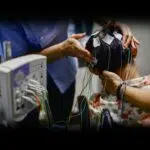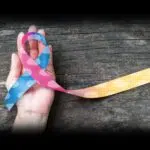We are observing Congenital Diaphragmatic Hernia Action Day on April 19. Congenital Diaphragmatic Hernia, or C.D.H., is a condition that occurs when the diaphragm — a thin sheet of muscle separating the chest cavity from the abdomen — is not fully developed or has a hole in it. The partial development of the hole causes the organs from the abdomen, like the bowels, stomach, or liver, to move up into the chest cavity. C.D.H. is a lesser-known condition that is quite common throughout the world. David Y. Ige, the Governor of the State of Hawaii, started the day to raise awareness about C.D.H.
History of Congenital Diaphragmatic Hernia Action Day
What would it be like to have all the organs from our abdomen pushed into our chest? How congested would the lungs and heart be? Can you imagine the severity of such a condition? This is what a congenital diaphragmatic hernia is. C.D.H. is a birth defect that results from an underdeveloped or malformed diaphragm. Unfortunately, this is a lesser-known common condition that requires more attention. It is a life-threatening condition in infants that can result in death due to complications. Complications can arise in two major forms: pulmonary hypoplasia and pulmonary hypertension. It has a mortality rate of 40 to 62%.
Dr. Lazare Rivière first described C.D.H. in 1679 after he noted the condition during a postmortem of a 24-year-old person. Similarly, Dr. Luther Emmett Holt also described the clinical and postmortem findings of C.D.H. in 1701. The condition was further studied and described in various papers throughout the centuries. But the first successful surgical treatment happened only in 1902. The advancement in neonatal medicine has increased the survival rate after surgery for infants. The advancement in ultrasound scanning technology has also made it easier for doctors to diagnose the condition at an early stage. This further helps to start treatment at the earliest and reduce risk.
Pulmonary hypoplasia and pulmonary hypertension are the two major causes of respiratory failure in infants due to C.D.H. These conditions can restrict blood flow to the lungs and can decrease lung volume significantly. Usually, the first stage of treatment is securing the airway through intubation. The malformation in the diaphragm is usually repaired through a technique called plication of the diaphragm. The outcome of the surgery depends on various factors like the severity of complications, genetics, the size of the hernia, etc.
Congenital Diaphragmatic Hernia Action Day timeline
Dr. Lazare Rivière first describes C.D.H. in 1679 after observing the condition during a postmortem.
Bochdalek describes C.D.H. as occurring through a posterolateral defect.
Engineer Tom Brown and Obstetrician Ian Donald starts using ultrasound, making it easy to diagnose C.D.H.
David Y. Ige, the Governor of the State of Hawaii, starts Congenital Diaphragmatic Hernia Action Day to raise awareness about C.D.H.
Congenital Diaphragmatic Hernia Action Day FAQs
Can a baby survive diaphragmatic hernia?
The overall survival rate in the U.S. is approximately between 65 to 70%.
How serious is a diaphragmatic hernia?
C.D.H. is a medical emergency and will require immediate surgery and long-term medical care.
Does C.D.H. run in families?
Researchers have, so far, not been able to link certain chemicals or nutrients as a cause of C.D.H. and there is no proof that it runs in families.
How to Observe Congenital Diaphragmatic Hernia Action Day
Help those in need
There are a lot of newborns all around the world suffering from C.D.H. Some of their parents lack money and awareness, which can be fatal for their babies. Try to spread awareness and help everyone get a fighting chance.
Spread information
You can raise funds, be a volunteer for organizations, or even fund those in need. But beyond all that, you can spread information and educate people about the complications of C.D.H. and how to get help. The right information at the right time can save some lives.
Wear a C.D.H. awareness ribbon
An important event that you can participate in is wearing the pink, blue, and yellow C.D.H. Awareness Ribbon. Share ribbons among your friends and encourage them to wear the ribbons and educate others who do not know the importance of the day.
5 Facts About C.D.H. That You Did Not Know
Early detection
Doctors can detect C.D.H. by ultrasound as early as 16 weeks in pregnancy.
High recurrence
Around 50% of patches used for repairing C.D.H. will recur.
One in 3,600
Research shows that in the U.S. alone one in every 3,600 infants is born with C.D.H.
Mortality rate
40 to 48% is the reported overall mortality rate for C.D.H.
Terrifying numbers
Some studies claim that around 147 babies are born every day with C.D.H.
Why Congenital Diaphragmatic Hernia Action Day is Important
Lack of awareness can be dangerous
The day is best used for sharing information about the condition, This information could save a few lives by making people aware of the lasting effects of C.D.H. Raising awareness can also help bring support and acceptance to those suffering from it.
It can affect the quality of life
C.D.H. can considerably affect the quality of life. The newborn baby should be properly treated before the condition causes complications and lasting damage. The day can push some serious momentum and energy to much-needed medical research in the field.
Timely diagnosis is important
Early diagnosis is the key to reducing the severity and effects of C.D.H. If not treated in time, the condition can be fatal for infants.
Congenital Diaphragmatic Hernia Action Day dates
| Year | Date | Day |
|---|---|---|
| 2026 | April 19 | Sunday |
| 2027 | April 19 | Monday |
| 2028 | April 19 | Wednesday |
| 2029 | April 19 | Thursday |
| 2030 | April 19 | Friday |
































